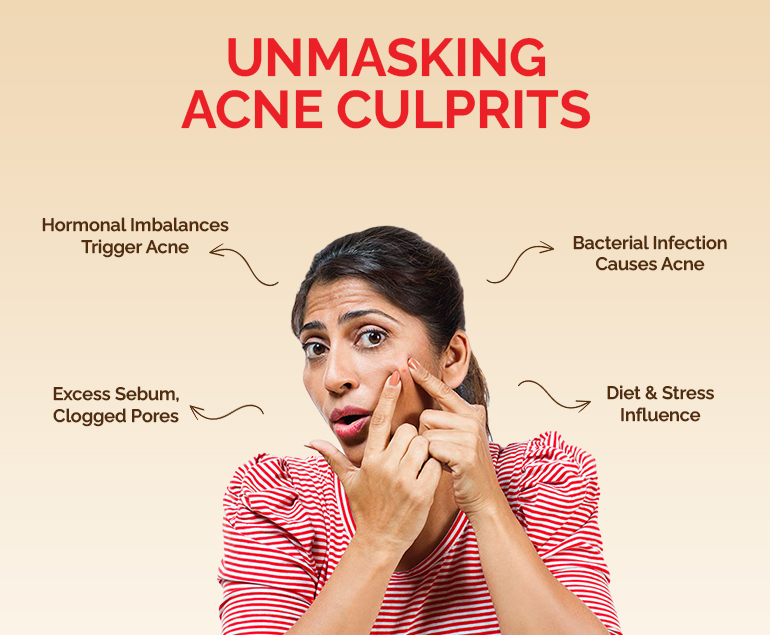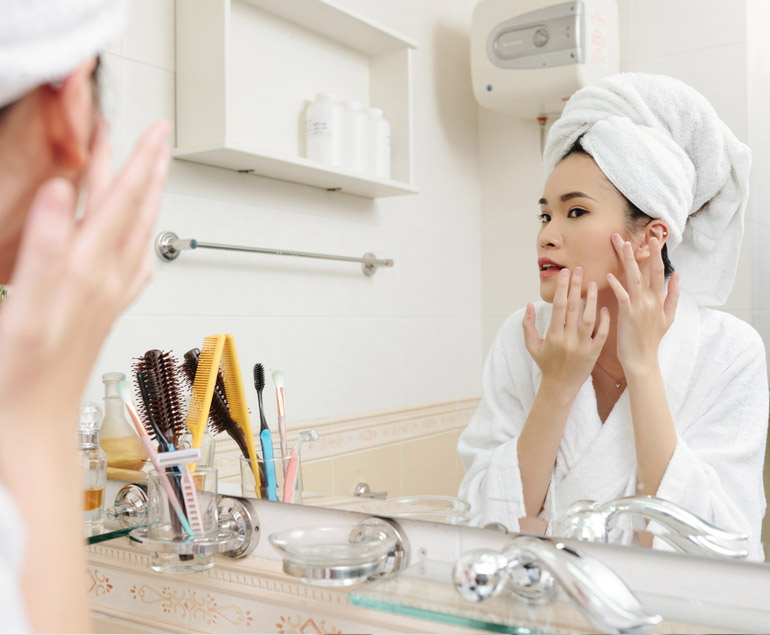Debunking acne myths
Acne, that most common of skin conditions, has been a source of frustration and misunderstanding for countless individuals. As a condition that affects millions of people worldwide, misconceptions about acne abound. This blog aims to unravel these misconceptions and delve into the underlying causes of this skin disorder to help demystify this often-misunderstood condition.
DISPELLING COMMON MISCONCEPTIONS ABOUT ACNE: UNMASKING THE UNDERLYING CAUSES
Misconception 1: Acne Is a Result of Poor Hygiene
One of the most pervasive myths about acne is that it’s caused by dirty skin. While keeping your skin clean is important, acne isn’t a direct consequence of poor hygiene. Acne is fundamentally a medical condition, influenced by a combination of factors, including genetics, hormones, and physiological. Excess oil production, dead skin cell buildup, and the presence of specific bacteria play more significant roles in acne formation than cleanliness. Over-cleansing the skin can even exacerbate the problem by stripping it of natural oils, leading to further oil production and worsening breakouts.
Misconception 2: Acne Only Affects Teenagers
Another widespread misconception is that acne is exclusive to teenagers. While it’s true that many adolescents experience acne during puberty due to hormonal changes, it’s not limited to this age group. Acne can affect people of all ages, including adults. Adult-onset acne may be related to hormonal fluctuations, stress, or other underlying health issues. It’s essential to understand that acne is not something that people simply “outgrow”; it can persist well into adulthood.
Misconception 3: Popping Pimples Is an Effective Way to Get Rid of Acne
The urge to pop pimples can be irresistible, but this is one of the most damaging misconceptions about acne. Popping or picking at pimples can worsen inflammation, lead to infection, and potentially result in scarring. It’s crucial to avoid squeezing or popping acne lesions. Instead, consult with a dermatologist who can provide safe and effective treatment options to address your acne.
Misconception 4: Acne Is Only Skin Deep
Acne is not solely a skin issue; it often has underlying causes that go beyond what’s visible on the surface. Hormonal imbalances, dietary choices, and even stress can contribute to the development of acne. To effectively manage and treat acne, it’s essential to address these underlying causes. A holistic approach to acne management, including lifestyle modifications and dietary adjustments, can be highly beneficial.
Misconception 5: Sun Exposure Clears Acne
Some people mistakenly believe that sun exposure can help clear acne. While sun exposure may initially dry out the skin and make acne lesions less visible, this effect is temporary and can be harmful in the long run. Prolonged sun exposure can lead to skin damage, premature aging, and even worsen acne by causing the skin to produce more oil as a protective measure. The use of sunscreen is essential to protect your skin from UV damage while managing acne.
Misconception 6: Acne Is a One-Size-Fits-All Condition
Acne is a complex and highly individualized condition. What works for one person may not work for another. The type of acne, its severity, and its underlying causes can vary widely between individuals. Consequently, there is no single “miracle” product or treatment that will work for everyone. It’s crucial to consult with a dermatologist to develop a personalized treatment plan that addresses your specific acne issues.
DELVING INTO THE UNDERLYING CAUSES OF ACNE
Now that we’ve cleared up some common misconceptions about acne, let’s delve into the underlying causes of this skin disorder. Understanding these causes can help you take a more informed approach to managing and treating your acne.
1. Hormonal Imbalances: Hormones play a significant role in acne development. Androgens, male hormones that both males and females have, can stimulate the sebaceous glands to produce more oil, making the skin more prone to acne. Hormonal fluctuations during puberty, menstruation, pregnancy, and menopause can all trigger or exacerbate acne.
2. Excess Sebum Production: The sebaceous glands in the skin produce sebum, an oily substance that helps protect and moisturize the skin. However, when these glands produce too much sebum, it can mix with dead skin cells and become trapped in hair follicles, leading to acne. This excess oil production can be influenced by hormones, genetics, and even certain medications.
3. Clogged Hair Follicles: Acne is often the result of hair follicles becoming clogged with a combination of excess sebum and dead skin cells. These clogged follicles create an environment where acne-causing bacteria can thrive, leading to inflammation and the formation of pimples.
4. Bacterial Infection: The bacterium Propionibacterium acnes (P. acnes) is a normal inhabitant of the skin, but when it multiplies excessively within clogged hair follicles, it can trigger inflammation and acne lesions.
5. Inflammation: Inflammation is a key driver of acne. It’s the body’s response to infection and irritation. In the context of acne, inflammation is a response to clogged hair follicles, bacterial infection, and the presence of excess oil. Inflammatory chemicals are released, leading to the redness, swelling, and discomfort associated with acne.
6. Genetics: Your genetic makeup can significantly influence your susceptibility to acne. If your parents or family members have a history of acne, you may be more prone to developing the condition.

In conclusion, acne is a complex skin condition with a range of underlying causes. Dispelling common misconceptions about acne is essential to take the right approach to its management. Understanding the factors that contribute to acne can help you work with a dermatologist to develop a personalized treatment plan that addresses your specific needs. Remember that acne is a common and treatable condition, and with the right care, you can achieve clearer, healthier skin.

